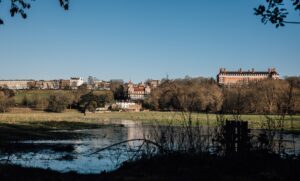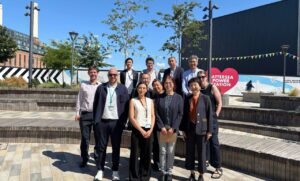
Meet Lily who joined Dot Dot Dot’s head office team in August. Lily studied Geography at the University of Birmingham, specialising in urban inequality. She’s currently pursuing a MSc in Urban Regeneration at The Bartlett School of Planning at UCL. With her academic background, she brings unique insights into community-centered development to her work here.
Get to know her and learn about her thoughts on urban development and regeneration below.
Q: How did your geography studies at the University of University shape your understanding of urban development in the property sector?
A: My degree focused on urban inequality and austerity, which led me to research the gentrification of the Bullring Markets for my dissertation. Interviewing council members and market retailers, showed me how regeneration can displace communities. It highlighted the need for planning and policy balancing social impact with commercial gain, and the property sector’s responsibility to address social and economic inequality.
Q: You’re the founder and host of The London Architect podcast. What led you to create a space to discuss London’s construction and design industry?
A: After graduating I wanted to understand the different players shaping London’s landscape, and the career paths available. I launched the London Architect to speak with professionals, across the sector, gain their career advice, and listen to their stories. I’ve interviewed engineers, architects, design specialists, and along the way found a path I want to pursue. I hope the podcast can help other young people feel inspired and equipped to build their careers too.
Q: What’s the most interesting conversation you’ve had on The London Architect podcast so far, and what did you learn from it?
A: The episode with Rachael Marshall, from Withernay projects. She’s an access and inclusive design specialist and has worked on the Barbican and the Strand. She explained how accessibility is far more than ramps – 1 in 5 people are disabled, and we need British standards that address neurological differences as well. It was intriguing to find out how much detail goes into one small sector of the design industry.
Q: What does “done right” look like to you when it comes to regenerating an area?
A: I think successful regeneration starts with community involvement. London has diverse needs, so we need multipurpose spaces shaped by local people’s visions. Genuine inclusion means removing economic barriers to include members of the community who may feel on the outside, like the elderly, new mothers, and migrants. Regeneration is more than residential schemes, it’s about improving lives, while using sustainable design that reduces carbon, and protects biodiversity and heritage.
Q: What made you want to join the Dot Dot Dot team?
A: My dissertation research made me realise the importance of supporting communities in areas caught between decline and revival. So when I learned about Dot Dot Dot’s guardianship model that focuses on strengthening social infrastructure, I was immediately drawn to the mission. The chance to work alongside socially minded colleagues and guardians was exactly what I was looking for.
Q: What are you most looking forward to working on?
A: I’m excited to help enhance the guardianship experience and support those living in Dot Dot Dot properties. The housing crisis is linked to so many other social and economic issues, like employment, education and healthcare, so I look forward to contributing to solutions that will have a big impact on people’s lives. I’m also studying a part-time Msc in Urban Regeneration alongside, so I can’t wait to see how the practical experience at Dot Dot Dot complements my academic learning and vice versa!


